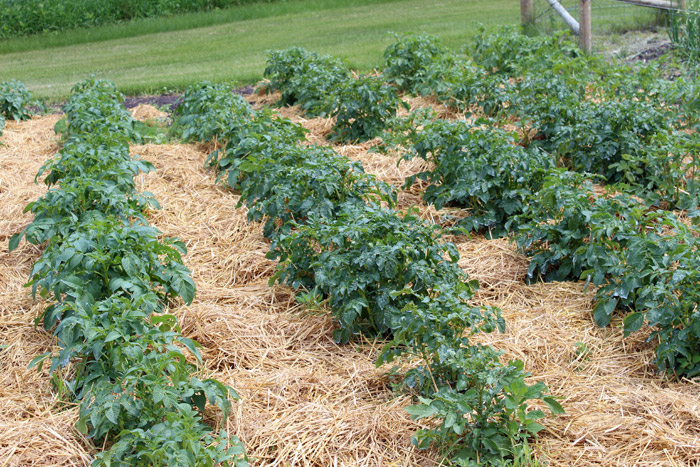Do you eat? If you do, you have to care about our soil, the most valuable resource we have.
The choices we make – both farmers and consumers – can encourage long-term thriving healthy soil, which means plentiful food and resilience to extreme weather, or can ensure continued erosion and eventual desertification on a planet that cannot sustain health or handle extreme weather.
I am a high school student and have been studying regenerative agriculture for the last four years. My dad and I have been implementing soil health principles on our farm. I am fascinated how livestock, using planned grazing techniques, can bring back productivity to damaged grassland ecosystems.
I have come to believe soil is our most important resource. What is more important than food and clean water? Living in a developed country, sadly I think the average person knows more about what their friends are doing on social media than where the food they buy in the grocery store comes from. Obsessed with the latest trends and technologies, we are completely disconnected from the source of everything: soil.
We assume we can somehow outsmart nature and have over-simplified soil. In our modern world, soil is portrayed as nothing more than dirt, a blank canvas that’s only function is to hold up crops or grow a lawn. We pump in fertilizers and herbicides, tilling the whole while. Many of our yards and fields have lost all biodiversity below and above ground. Our land is losing its ability to handle drought or high amounts of rainfall.
According to David R. Montgomery, it is estimated that twenty-four billion tons of soil are lost to erosion around the world annually. That is several tons for each person on the planet each year – productive soils that took thousands of years to develop washing or blowing away in an instant.
Will Harris, owner of White Oak Pastures says, “If farmers want to raise food in a way that is better for all concerned, and if they don’t want to hand over a legacy of desertification, depleted soils and polluted water to the next generation, they have to stop focusing on the end products and turn around to focus on nature as the source of life and growth.”
We need to see soil as a living, complex community of bacteria, microorganisms and fungi, all working together in an inconceivably vast and intricate ecosystem. When we experience undesirable symptoms of a larger problem, we need to stop fixing the problem with large doses of chemicals, and understand nature is trying to heal itself. Practices like tilling and spraying are destroying our very precious resource, faster than you may think.
This is not new and has actually been happening for thousands of years. In the book, Dirt: The Erosion of Civilizations, David Montgomery describes multiple ancient civilizations that thrived with sudden population boosts after their own mini agricultural revolutions. With higher population came more demand for food, and thus more demand for farmland. But the sudden expansion of cropland always led to the same problem: mass erosion.
And with this erosion came the inevitable downfall of the civilization, as their valuable soil washed away by wind or water. Ancient Greece, the Roman Empire, ancient Mayan civilizations are all examples. We must be very careful not to follow this pattern on a global scale. The dust bowl of the 1930s shows how damaging our tillage addiction is, and how fragile farmland can become.
According to Allan Savory, creator of Holistic Management, currently the loss of organic matter around the world’s soils account for 30 percent of global carbon dioxide emissions, and biomass burning of crop residue, grasslands and forests account for 18 percent. Soil destruction nearly equals emissions from fossil fuels. Our own land management practices play an enormous role in reducing or increasing our resilience to droughts, floods, infestations or diseases, not to mention that healthy soil can sequester enormous amounts of carbon.
Thankfully, there are many ways to heal soil. Gabe Brown describes in his book, Dirt to Soil, how he transformed his severely degraded farmland into an incredibly healthy and resilient ecosystem. Using the soil health principles, he experienced higher productivity than he ever got under conventional management.
It is extremely important for everyone, not just farmers, to care about our soil. Remember, if we can no longer grow food, it’s everyone’s problem. Here are three of the best ways I think we can all participate in to improve our soils:
Buy local, directly from producers. Ask and be involved in your food’s impact on the soil and the environment. This also encourages producers to change. If the farmer knows what their customers value, they’ll strive to keep those values to heal their soil.
Grow a garden. Growing food yourself allows you to heal soil on your own and not depend on destructive industrial land management. My mom is using soil health principles by experimenting with a no-till garden. Instead of tilling to control weeds, she spreads a thick layer of straw, and this has the added benefits of drastically increasing water holding capacity while simultaneously fertilizing the ground.
Learn the Principles of Soil Health. Knowing these principles will help you make better decisions regarding how you grow your own garden or which farmer you buy your food from.
- Avoid mechanical and chemical disturbances. This includes tilling, which breaks down the soil’s structure and its ability to hold nutrients. Chemicals like fertilizers, herbicides and fungicides destroy soil biology.
- Keep the soil covered at all times. Bare soil is extremely susceptible to erosion by water or even wind. On hot summer days, unprotected black soil reaches temperatures that kill soil microbes.
- Encourage a wide diversity of plants and species. This prevents diseases and creates resilient plant, bug and microbe communities that feed one another.
- Retain a living cover as long as possible. Soil microbes are fed by plants, and vice versa. Green plants keep the soil healthy and living.
- Livestock are an integral aspect to soil health. Properly managed, grazing animals can produce more effective healing results than anything else, as our vast prairie grassland soils developed hand in hand with huge herds of grazing animals. Livestock can be used to trample old grass and germinate new seeds, while also fertilizing the soil with manure.
For more information, I recommend everyone read Holistic Management: A Commonsense Revolution to Restoring Our Environment by Allan Savory, Dirt: The Erosion of Civilization by David Montgomery and A Bold Return to Giving a Damn: The Future of Food by Will Harris.




